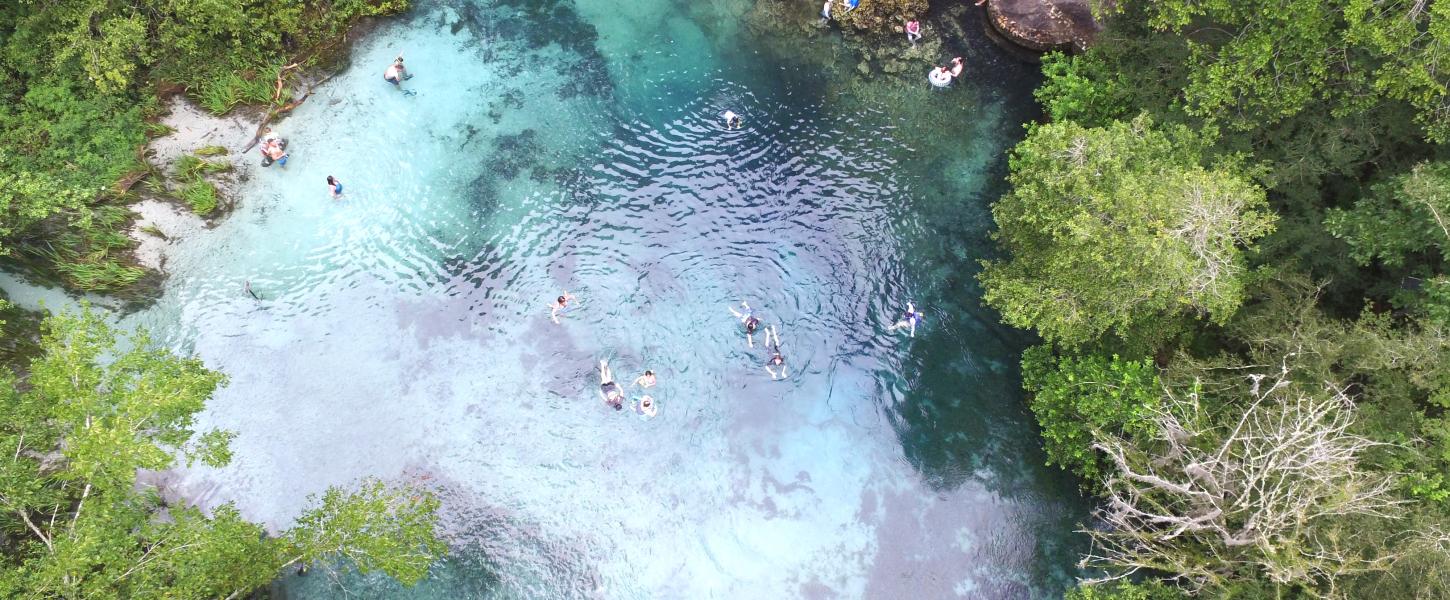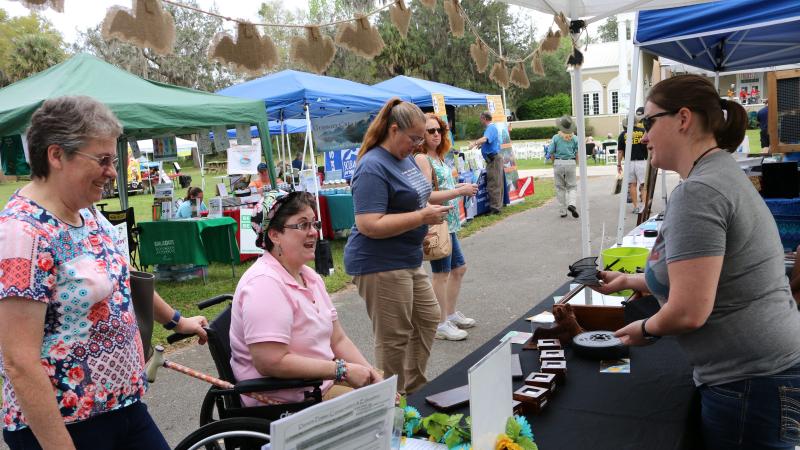Springs at Florida State Parks

Florida's springs are windows into the past and places of tremendous natural beauty. No two springs are the same, and each one has its own unique place in human history and in Florida’s ecosystem.
Florida’s springs were what first lured tourist to the state, with their refreshing waters and wildlife viewing opportunities. Silver Springs State Park was the site of a 19th century tourist operation which showcased the spring’s beauty, a tradition which continues today. Each visitor is transformed by the therapeutic quality of the clear flowing water and lush banks of Florida’s springs.
Springs also played a substantial role in the settlement of Florida. They were centers of American Indian communities and were used for places of permanent settlement or respite on long journeys. Evidence of Florida’s history, including Pleistocene fossils, Timucuan artifacts and early 20th century equipment dots the landscape and spring runs of the state. In fact, a mastodon skeleton recovered from Edward Ball Wakulla Springs State Park is on display in the Florida Museum of History.
Florida is the premier location to experience springs worldwide, because of the abundance and magnitude of our many springs. The natural wonders are created when rainwater collects underground and flows to the surface through the aquifer. The aquifer is a network of limestone caves and crevasses which form the drinking water reserve for most of Florida. Researchers from around the world use parks like Wes Skiles Peacock Springs and Lafayette Blue Springs to map this underground system.
The Florida Department of Environmental Protection (DEP) is dedicated to protecting these natural resources. Along with protecting springs within the state park system, DEP monitors water statewide and establishes protection which will ensure its quality for generations.
This mission is essential as many native species rely on the springs. Florida manatees, winter residents of Blue Spring State Park and other parks, depend on the consistent 68-72°F water of springs to seek winter shelter and rear their young. Migrating birds touchdown every autumn, deer approach the banks for a sip and otters and fish live and hunt throughout the waters originated from springs.
Whether searching for a place to swim, view wildlife or seek refuge from a busy world, the call of Florida springs has echoed throughout the generations.

